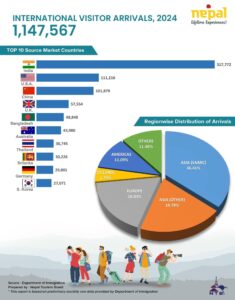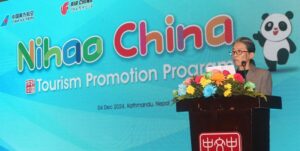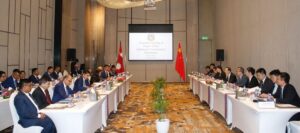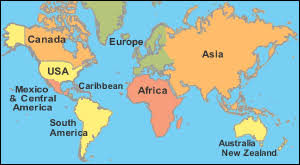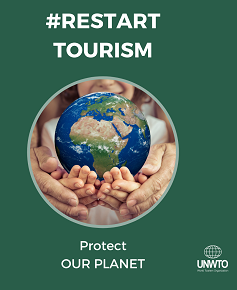Integrated action plan for tourism development in western region
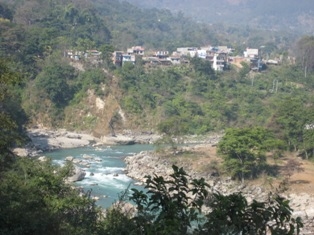
KATHMANDU: The most frequented tourist destinations in the western region of Nepal are Lumbini, birthplace of Lord Buddha, Muktinath, and the Annapurna trekking route.
The Machhapuchchhre, Annapurana and Dhaulagiri peaks and the lakes in the Pokhara valley adds further charisma to the beauty in this region thereby making it the second touristy destination after the Capital city, Kathmandu.
Similarly, the birthplace of the Adikavi Bhanubhakta, Chundiramgha; birthplace of Kavi Shironami, Arghau Archale; birthplace of the Ved Vyas, Damauli; and other religious places as Triveni, Devghat, Ridi, Gorkha and the historic place of Palpa are other must visit places in this region.
The diverse culture and communities in Manang and Mustang, the districts beyond the Himalaya, is always luring the foreign and domestic tourists. Gurung, Magar, Newar and other ethnic communities with diverse culture and lifestyles here are unforgettable parts contributing to the tourism in this area.
Bandipur, Ghalegaon, Sirubari and Bhujung are the places the tourists enjoy much.
Keeping these facts in centre, the newly elected Constituent Assembly members from the western region of Nepal have united to make a long term plan and further develop these areas and contribute to nation’s economy.
At a programme organized by the Nepali Congress in the capital city on Friday, the CA members and the tourism entrepreneurs and tourism experts held a discussion.
Addressing the programme, Nepali Congress Vice-President and the CA member Ram Chandra Poudel said political commitment was essential for bringing change in the tourism of the western region. Concerted efforts and pressure was important for this, he added.
“Construction of only seven kilometer long road helped develop Bandipur as a touristic place. The potential of tourism in term of culture, nature and literature is very high in this region. A master plan was needed to boost tourism here,” leader Poudel stressed.
Similarly, other CA members Romi Gauchan Thakali, Ram Chandra Pokhrel and Jivan Pariyar said the promotion of tourism needs to benefit the rural people most.
Director at Nepal Tourism Board, Kashi Ram Bhandari, informed that 800,000 tourists visited Nepal in 2012 which was an increase by 8 percent than the previous year.The average stay of the foreign tourists in Nepal is 12 days. Some 500,000 people have got employment in this sector.
According to him, among the foreign tourists, 60 percent go for Annapurna trekking route which falls in Manang and Mustang districts.
Former Chairman of Pokhara Tourism Council and tourism entrepreneurs Sundar Kumar Shrestha said a perspective plan was essential on tourism making Pokhara the centre. Government needs to build further infrastructures to enhance tourism, he added.
Noted tourism entrepreneur Karna Shakya said despite plethora of nature, culture and resources in Nepal, the lack of utilization and mobilization was challenging to expand tourism.
According to him, political willpower was a must to create favourable atmosphere for the expansion and promotion of the tourism in Nepal. While developing tourism, role of agriculture and ecosystem can not be ignored, he stressed.
CA members Bharat Saha said no more than 20 percent of works under the Lumbini Master Plan have been carried out yet. There was many to do for the development of Lumbini, he added.
Similarly, Prakash Poudel and Arjun Prasad Joshi suggested that the tourists in Ghandruk and Mustang area could be attracted to Baglung and Paravat districts.Also speaking on the occasion were Kamala Pant, Shankar Bhandari, Dhrub Wagle and Yagya Bahadur Thapa.
The discussion was attended by CA members Gopal Man Shrestha, Dil Bahadur Gharti, Bal Krishna Khand, Kamal Pangeni, Jhul Bahadur Ale, Dhan Raj Gurung, Sharada Poudel, Brinda Ranamagar, Hari Prasad Nepal, Chandra Bahadur Kunwar, Dr Krishna Bahadur Chhantyal, Ratna Sherchan, Harki Bahadur Khadka, Gyan Kumari Chhantyal, Man Bahadur Bishwokarma, Bikram Khanal, Chiranjivi Shrestha and tourism entrepreneurs including Ram Kumar Kone. RSS




